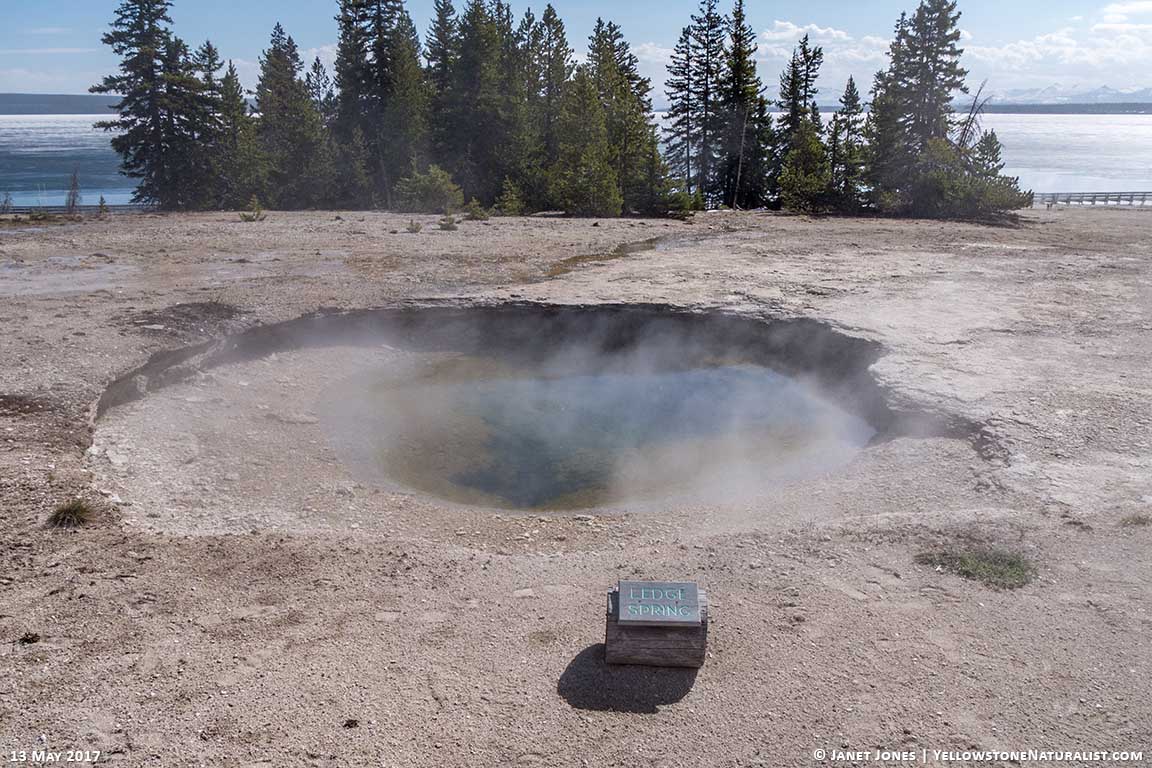Watching Ledge Spring Erupt
Ledge Spring is one of the thermal features at West Thumb that has benefited from the energy increase that started last August with the appearance of “Waterfall Geyser.”
In just a few days, this spring when from lower water and a crater lined with brown microbes to full, blue and erupting. On my visit on May 13, Ledge Spring had a water level about 8 inches above the line of microbes. That line of microbes indicates where the water level has been steady enough at a temperature where those brown microbes thrive. I’ve heard it looked the same on the 14th.
On the 19th, knowledgeable geyser gazer, Tara Cross entered a note in at Geyser Times that said it looked post eruptive. I messaged her to find out details and was thrilled to learn it had shifted to this activity.
The 23rd was the first chance I had to get back into the park, and Tara was right – Ledge Spring was back! It’s been years since it’s been seen in overflow and blue – 2009 according to the photo records. It might have had eruptions then, but all I ever saw was water calmly overflowing – no bubbles rising to indicate eruptive potential. The last witnessed and reported eruption was in 2007.
WHAT TO WATCH FOR
Since geysers are not regularly seen at West Thumb, this energy increase is one you might not want to miss. As I write this (mid-June 2017), the entries at Geyser Times seem to show it’s erupting every 15-40 minutes, but 30 minutes seems to be the most common interval between eruptions.
After an eruption, Ledge Spring’s water level will be below overflow. You’ll see bubbles rising pretty much all throughout the time while it’s plumbing system recharges. Slowly the water will rise and start overflowing down the hill from the side farthest from the boardwalk. This will (again slowly) increase in volume as the water level continues to rise millimeter by millimeter.
The spot to watch for the overflow of water that indicates an eruption is about to start is the “front right” edge as you’re standing on the boardwalk facing Ledge Spring. The water will continue to rise and slowly creep over that edge until it floods that section of overflow channel. And then the eruption is on.
But it’s always easiest to just watch one, so here’s a video for you. Enjoy – and I hope you get a chance to see it in person.
